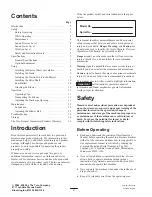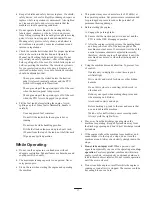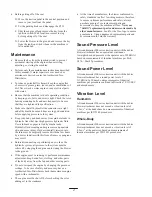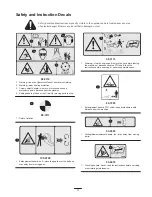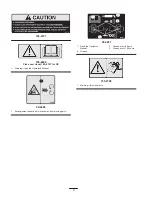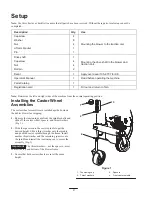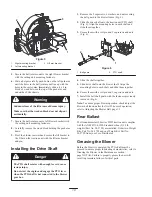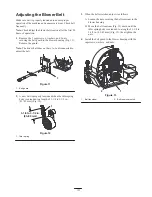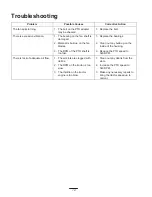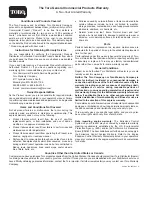
3
•
Keep all shields and safety devices in place. If a shield,
safety device, or decal is illegible or damaged, repair or
replace it before operation is commenced. Also tighten
any loose nuts, bolts, and screws to ensure that the
machine is in safe operating condition.
•
Do not operate the machine while wearing sandals,
tennis shoes, sneakers, or shorts. Also, do not wear
loose fitting clothing which could get caught in moving
parts. Always wear long pants and substantial shoes.
Wearing safety glasses, safety shoes, and a helmet is
advisable and required by some local ordinances and
insurance regulations.
•
Check the interlock switches daily for proper operation;
refer to the section in the traction unit Operator’s
Manual on Checking the Interlock Switches. Do not
rely entirely on safety switches—shut off the engine
before getting off of the seat. If a switch fails, replace it
before operating the machine. The interlock system is
for your protection, so do not bypass it. Replace all
interlock switches every two years. Interlock switches
should be adjusted so that:
–
The engine cannot be started unless the traction
pedal is released (neutral position) and the PTO
switch is Disengaged (off position).
–
The engine stops if the operator gets off of the seat
when the traction pedal is depressed.
–
The engine stops if the operator gets off of the seat
when the PTO lever is Engaged (on position).
•
Fill the fuel tank before starting the engine. Avoid
spilling any fuel. Since fuel is flammable, handle it
carefully.
–
Use an approved fuel container.
–
Do not fill the tank while the engine is hot or
running.
–
Do not smoke while handling gasoline.
–
Fill the fuel tank outdoors and up to about 1 inch
(25 mm) from the top of the tank, not the filler neck.
–
Wipe up any spilled gasoline.
While Operating
•
Do not run the engine in a confined area without
adequate ventilation. Exhaust fumes are hazardous and
could possibly be deadly.
•
The maximum seating capacity is one person. Never
carry passengers.
•
Sit on the seat when starting the engine and operating
the machine.
•
This product may exceed noise levels of 85 dB(A) at
the operator position. Ear protectors are recommended
for prolonged exposure to reduce the potential of
permanent hearing damage.
•
Before starting the engine:
A. Engage the parking brake.
B. Ensure that the traction pedal is in neutral and the
PTO is in the OFF, disengaged position.
C. After the engine is started, release the parking brake
and keep your foot off of the traction pedal. The
machine must not move. If movement is evident, the
neutral return mechanism is adjusted incorrectly;
therefore, shut the engine off and adjust it until the
machine does not move when the traction pedal is
released.
•
Using the machine demands attention. To prevent loss
of control:
–
Operate only in daylight or when there is good
artificial light.
–
Drive slowly and watch for holes or other hidden
hazards.
–
Do not drive close to a sand trap, ditch, creek, or
other hazard.
–
Reduce your speed when making sharp turns and
when turning on hillsides.
–
Avoid sudden starts and stops.
–
Before backing up, look to the rear and ensure that
no one is behind the machine.
–
Watch out for traffic when near or crossing roads.
Always yield the right-of-way.
•
Stay away from the discharge opening when the
machine is operating. Keep all bystanders away from
the discharge opening and don’t direct discharge toward
bystanders.
•
If the engine stalls or the machine loses headway and
cannot make it to the top of a slope, do not turn the
machine around. Always back slowly straight down the
slope.
•
Do not take an injury risk! When a person or pet
appears unexpectedly in or near the operating area, stop
operation. Careless operation, combined with terrain
angles, ricochets, or improperly positioned guards can
lead to thrown object injuries. Do not resume operation
until the area is cleared.
•
Do not touch the engine or muffler while the engine is
running or soon after it is stopped. These areas could be
hot enough to cause a burn.


